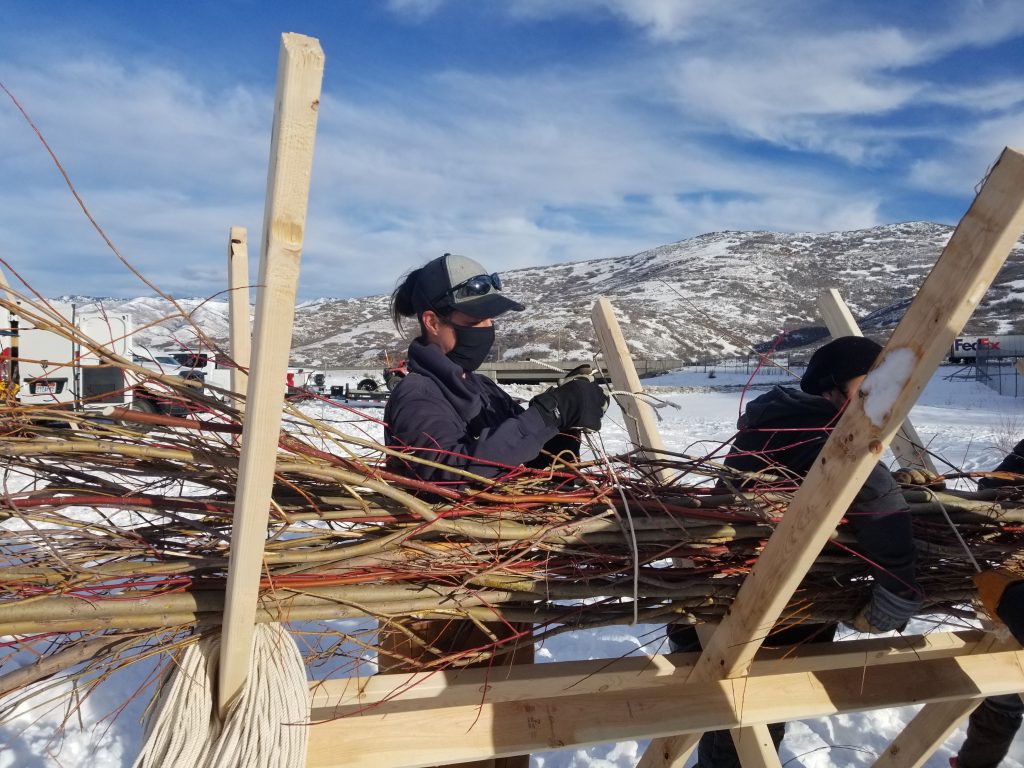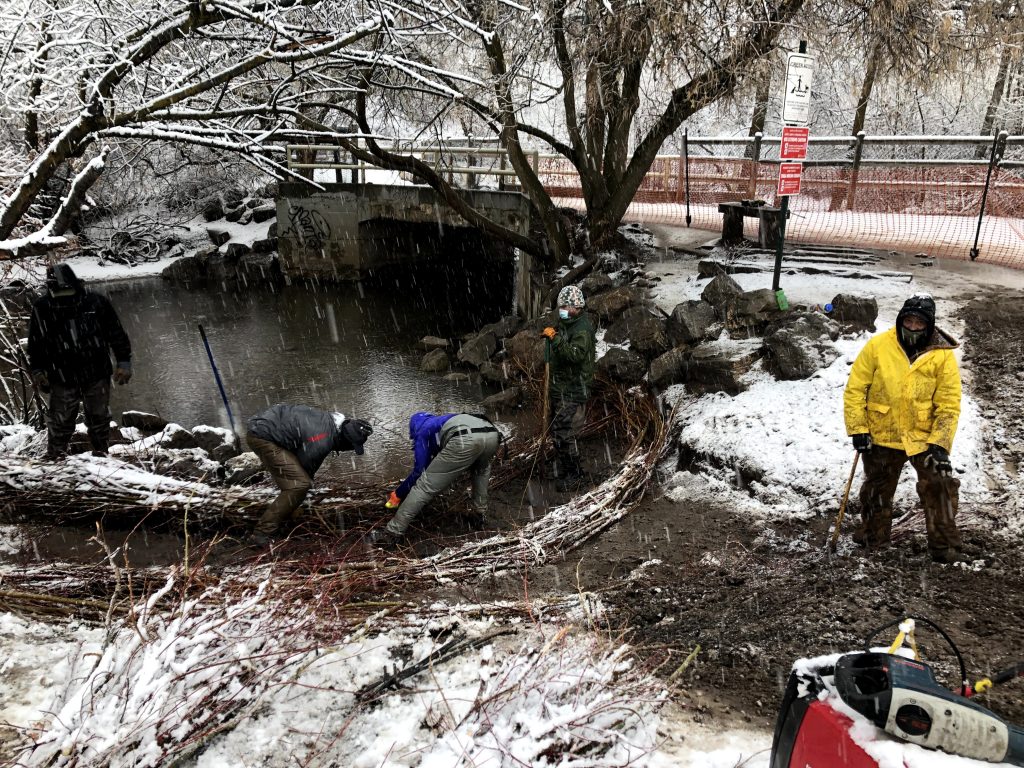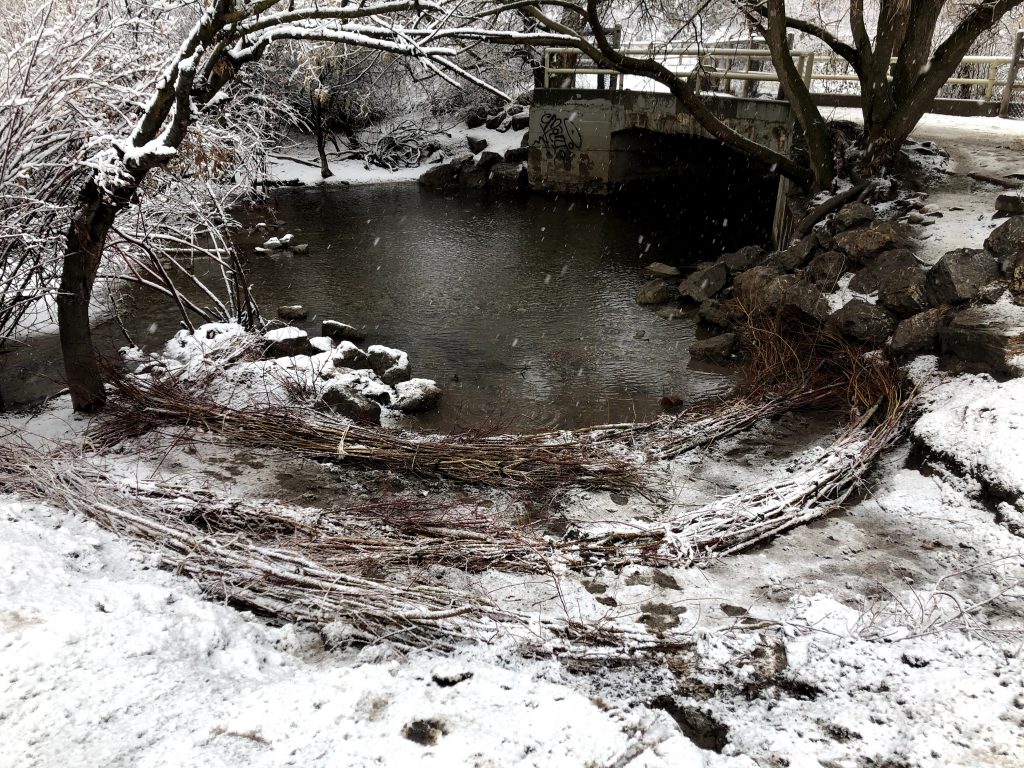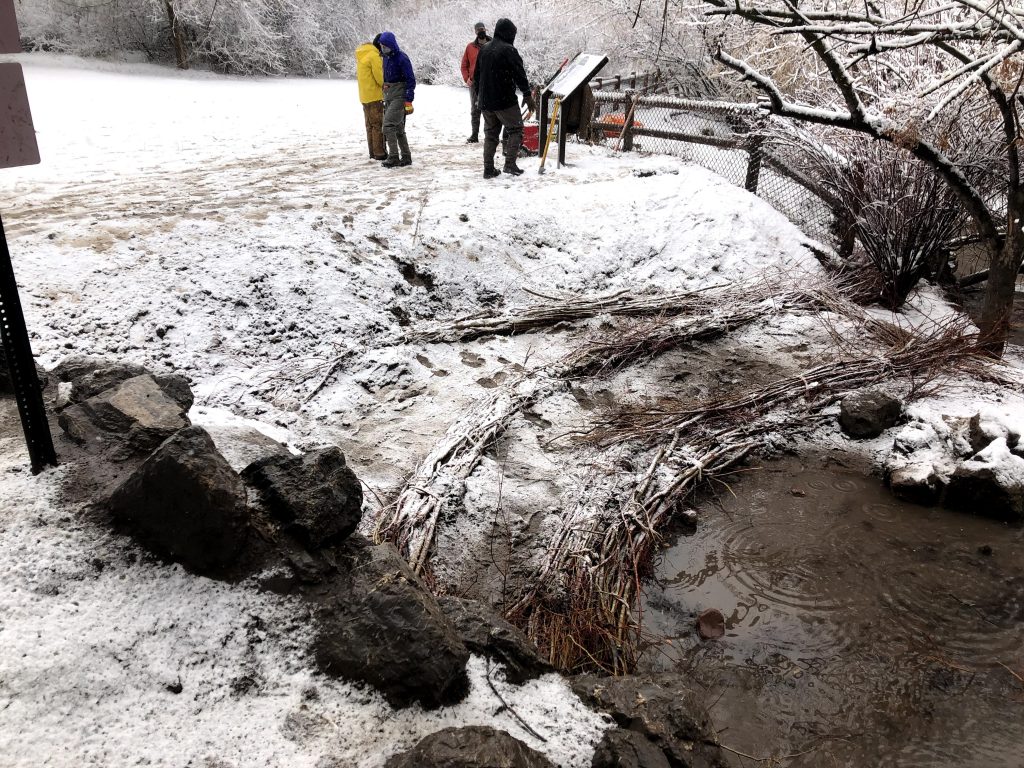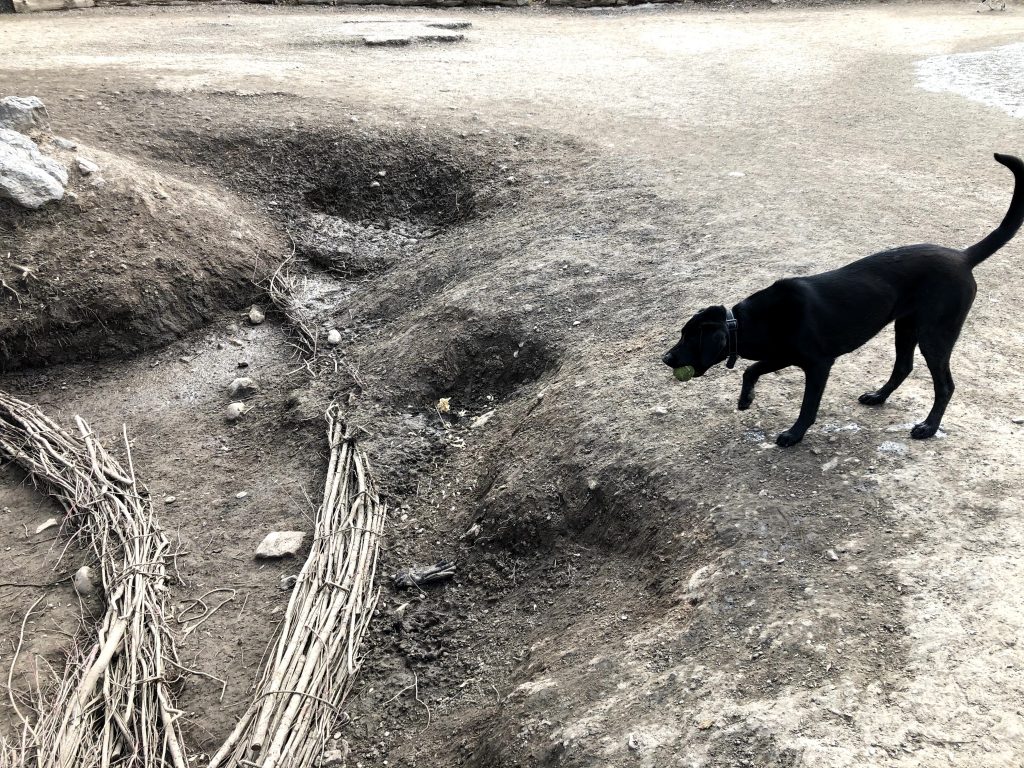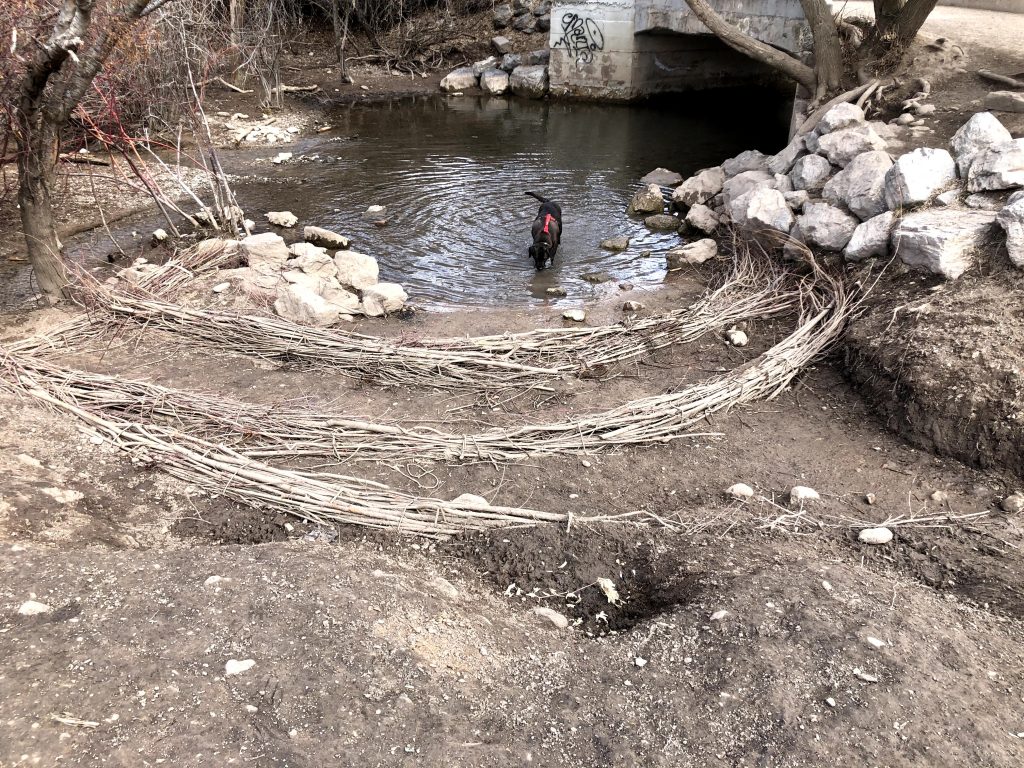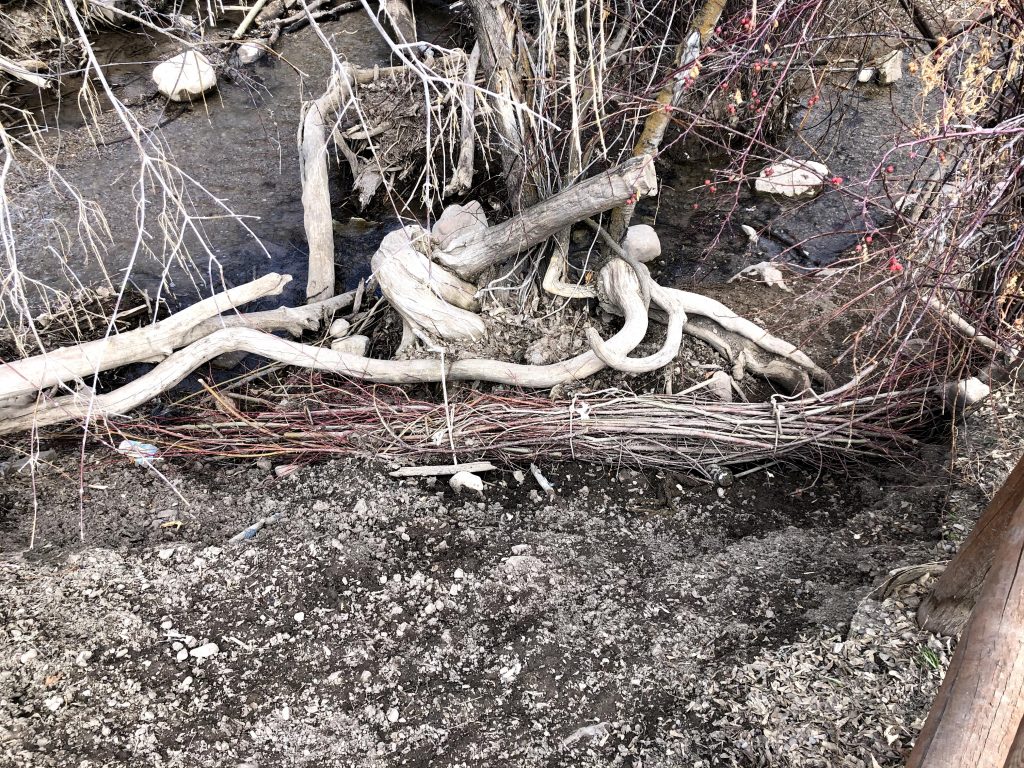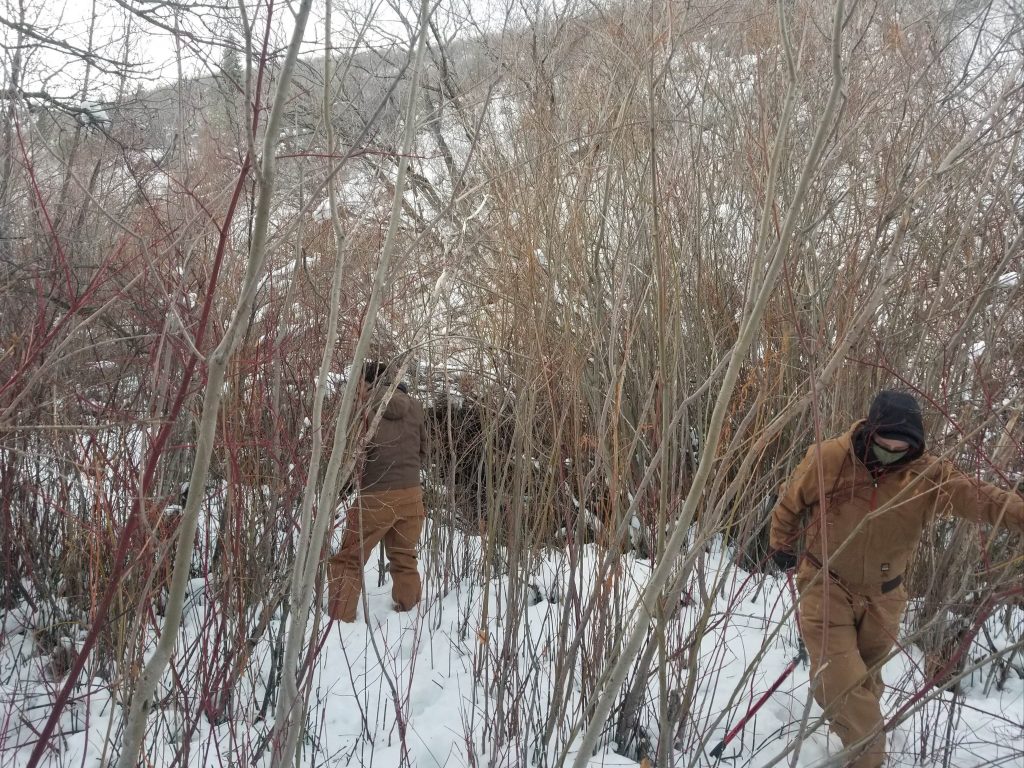A First for Salt Lake City’s Trails and Natural Lands
We think fascines are awesome, and we’re even more enthusiastic about the potential they have as a natural intervention to prevent erosion, increase the health of our creek and riverbanks, and improve the quality of our water. Our team here at TNL, in partnership with Salt Lake County Watershed has made and installed Salt Lake City’s first fascines at Parley’s Historic Nature Park. We want to fill you in on our high hopes for them and how you can help us ensure they’re successful in what we want them to achieve. So, let’s talk fascines.
What Is A Fascine?
The name fascine comes from the Latin for “bundle of sticks.” Common uses of fascines are for protecting the banks of streams from erosion, and for covering marshy ground. For Salt Lake City, it’s that erosion part we’re interested in.
Why Do We Need Them?
Fascines can be a natural, lower-cost bandage that assists in repairing stream and riverbank erosion. They are good at minimizing the amount of sediment going into the stream and at improving overall water quality. We hope they also become a visual reminder to show public lands users how erosion abatement works, and to remember to be environmentally conscious around them.
Where Are We Implementing Them?
In collaboration with Salt Lake County Watershed, we are currently installing natural-material fascines in Parley’s Historic Nature Park on the bank below the bridge where many dogs like to enter and play in the water. Over time, that activity, concentrated at that spot, has eroded the natural bank there and widened the creek. Simply put, bank erosion and water pollution are the reasons for this approach. Pretty good reasons, don’t you think?
Who is Eroding Our Riverbanks?
Erosion can be caused by a number of contributing factors, but specifically In Parley’s Historic Nature Park, it’s really just the sheer number of dogs entering and playing in the water at the same spot for several years that has exacerbated the problem, and decimated the embankment there.
What Does Fascine Installment Do for the Environment?
These dogwood and willow fascines, as shown in the photo, are sourced from nearby Lamb’s Canyon. They will eventually take root, which will strengthen their effectiveness as they integrate with and support existing vegetation to make a stronger and more stable streambank. Ultimately, while the fascines themselves are temporary, the impact they can have can be long lasting, or at least a significant stopgap until a more permanent solution can be installed.
How Can the Public Help?
The dogs are eroding that bank quickly and it’s contributing to poor water quality as well. Pet owners can help by not stepping directly onto the fascines and preventing pets from doing the same. Reporting any damage or needed maintenance is also helpful, particularly if someone sees an uprooted or displaced bundle. You can call the Public Lands front desk to report it at 801-535-7800 or email us at openspacecomments@slcgov.com. Any pictures you take are always a helpful bonus to let us know what we’re up against.
How Can the Public Help? (Number 2)
Of course, cleaning up properly after our animal’s waste decreases the amount of pollutants that run into the creek when it rains. Rain is probably the biggest contributor to fecal matter entering our streams. Fascines and vegetation will help filter it, but simply not having poop on the ground will make it even better! So please remember to bag it up and pack it out, particularly if there are no trash bins nearby.
For ongoing updates about our use of these literal bundles of joy, and other projects, be sure to sign-up to receive TNL’s quarterly newsletter, The Trailhead, straight to your inbox.
